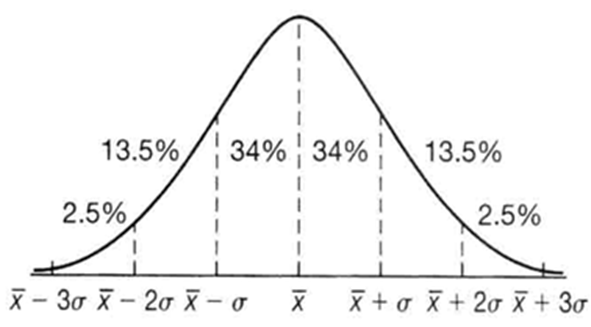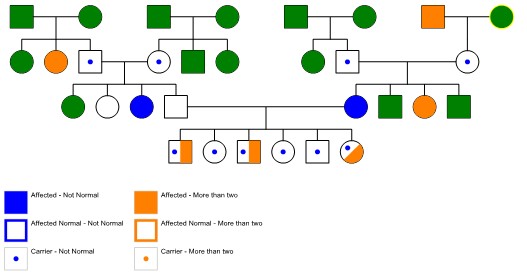Parent Category:
"If You Can’t Measure It, You Can’t Improve It"
Background
Historically the conformation sport has been the primary venue used by breeders and exhibitors to observe stud dogs, brood bitches and the results of breedings along with the progress and development of their breed. Over several decades, with the growth of low entry breeds (LE), the decline in show entries and the increased use of Limited Registrations (LR’s), the conformation sport has lost much of its attraction for these purposes. Related to these concerns is the noticeable decline in the number of breeders who use a breed standard when selecting breeding stock. When these factors are combined, they can, and are, causing serious problems for many breeds and the future of the stud book.
Conformation Sport
For the reasons previously identified in Parts I, II, III, this was a data-driven study that focused on the fourth factor known to impact the conformation sport and the stud book. The focus of the three previous reports was on: declining registrations, low conversion rates, Low Entry Breeds and shrinking gene pool populations. The data used and explanations given were previously published in past issues of the Canine Chronicle. A further review of the data also showed a connection between the size of gene pool populations and the implications for breed health, especially in those breeds that are unable to grow and expand (Bell). The concern has been growing and the number of low entry breeds and the increasing use of limited registrations needs to be reviewed.
We begin this report with the understanding that the registration process is at the heart of many of the problems and influencing the future of many breeds and the conformation sport. For several years declining registrations have negatively impacted the stewardship of breeds, club memberships, the loss of breeders who use a breed standard and show entries. Until recently, little attention has been paid to their impact. With this as background, this fourth data-driven study will focus on the third kind of registration which is the breeder’s tool called the Limited Registration (LR).
Limited Registration (LR)
For more than a century the breeding of purebred dogs has produced many healthy forms of breed improvements. Most were the result of a lot of little experiments. Some failed but others succeeded and were copied. Success varied widely from breed to breed and most depended on the creativity and imagination of many dedicated breeders. Over these many years, policies and practices changed along with breeder and owner attitudes. The idea for a third kind of registration was born in 1989 when breeders requested help with pups known to have disqualifications and or serious health or breed faults. Breeders asked for a procedure that would allow dogs to be registered, but restricted and limited from breeding and competition in the conformation sport. In 1993 the request was approved, and AKC began to keep records on the use of LR’s. In the first year of use, 371 puppies were registered with an LR. By 2016, the cumulative number of dogs placed on an LR had surpassed one million. No records are available for dogs sold on an LR that are not registered however, some estimate this number to be equal to those registered. Table 1 shows the steady growth of LR’s over the past 25 years. Since 2011, the growth in the use of LR’s has become especially troubling, and in 2017, breeders set an all-time record high with 121, 227 LRs for the year.
| Litter Registration Year | Revoked | # Limited |
| 1993 | 35 | 371 |
| 1994 | 74 | 275 |
| 1995 | 102 | 406 |
| 1996 | 190 | 631 |
| 1997 | 244 | 893 |
| 1998 | 301 | 1,790 |
| 1999 | 851 | 23,070 |
| 2000 | 1,765 | 75,037 |
| 2001 | 1,815 | 77,987 |
| 2002 | 1,578 | 80,237 |
| 2003 | 1,572 | 87,813 |
| 2004 | 1,653 | 99,464 |
| 2005 | 1,570 | 85,742 |
| 2006 | 1,486 | 78,867 |
| 2007 | 1,422 | 76,173 |
| 2008 | 1,480 | 76,767 |
| 2009 | 1,538 | 73,670 |
| 2010 | 1,283 | 69,769 |
| 2011 | 1,407 | 73,108 |
| 2012 | 1,392 | 74,760 |
| 2013 | 1,479 | 78,611 |
| 2014 | 1,501 | 84,432 |
| 2015 | 1,328 | 94,600 |
| 2016 | 829 | 106,212 |
| 2017 | 121,227 |
The cumulative growth of LR ’s over 25 years has contributed to the decline in a breed’s population size, number of breeders and show entries. Because the growth in the number of LRs exceed those expected, the Bell Curve was used to determine the statistical likelihood that pups with disqualifications, serious breed faults or health problems would occur in a breed population. Using the Bell Curve, the distribution of the very best and worst specimens in a breed are expected to fall in the range of 4% – 6% as seen in Figure 1. Dogs expected to be average in quality fall in the range of 68%. Because the actual number of LR’s is significantly greater than what is expected, one can conclude the presence of a breeder/ buyer bias.
Figure 1. Bell Curve

To better understand the breeder/buyer bias, three approaches were used. The first involved a review of the efforts made by research organizations whose mission is to help breeders make improvements via funded canine research grants. This review included the financial support provided by: AKC Canine Health Foundation and Morris Animal Foundation ($95 million), Nestle Purina Pet Care ($14 million) and Zoetis ($1.9 million). These research efforts, when taken together, have produced many notable accomplishments and a large number of successes. The second review involved the widespread use of the Symbols pedigree (Figure 2) which researchers and breeders use to identify and track health problems, carriers and affected individuals. This pedigree is also used to advance the evaluation of behavior problems, gender and family issues, and as a way to control the management of many canine health disorders.
Figure 2. Symbols Pedigree

Note: color codes show clear and affected ancestors. Dots indicate a carrier.
When these efforts are taken together, one would expect fewer, rather than more, dogs with DQ’s, severe breed faults and health problems.
the behavior of puppy buyers or as a means to require more money for a fully registered pup. The list of faults and non-health reasons given was small and not worrisome.
The next step was to review the data previously reported in Parts I, II and III, which included the impact of LE breeds, low conversion rates and the declines of entries at dog shows. Table 2 represents an alpha listing of all breeds in the stud book. Each breed’s data is based on three average years (2013,14,15). Column headings allow the reader to track 10 specific factors that are related to the problems confronting the conformation sport. For example, Affenincshers are ranked 129th, with the registration of 54 litters that produced 144 pups of which 116 or 80.1% were registered. Nine of these 116 pups, or 8% were placed on LR’s, 22 were bred and 53 entered in one of the 1,424 All-Breed shows.
About the Author
Carmen L Battaglia holds a Ph.D. and Masters Degree from Florida State University. As an AKC judge, researcher and writer, he has been a leader in promotion of breeding better dogs and has written many articles and several books.Dr. Battaglia is also a popular TV and radio talk show speaker. His seminars on breeding dogs, selecting sires and choosing puppies have been well received by the breed clubs all over the country.

